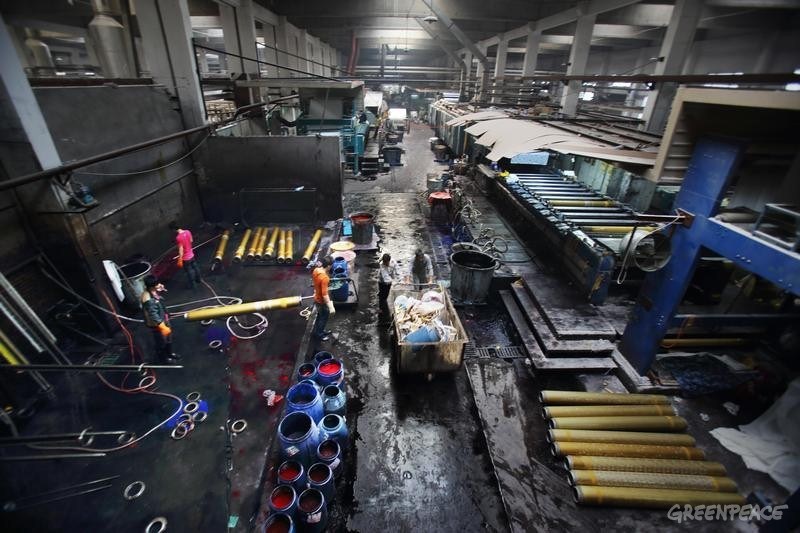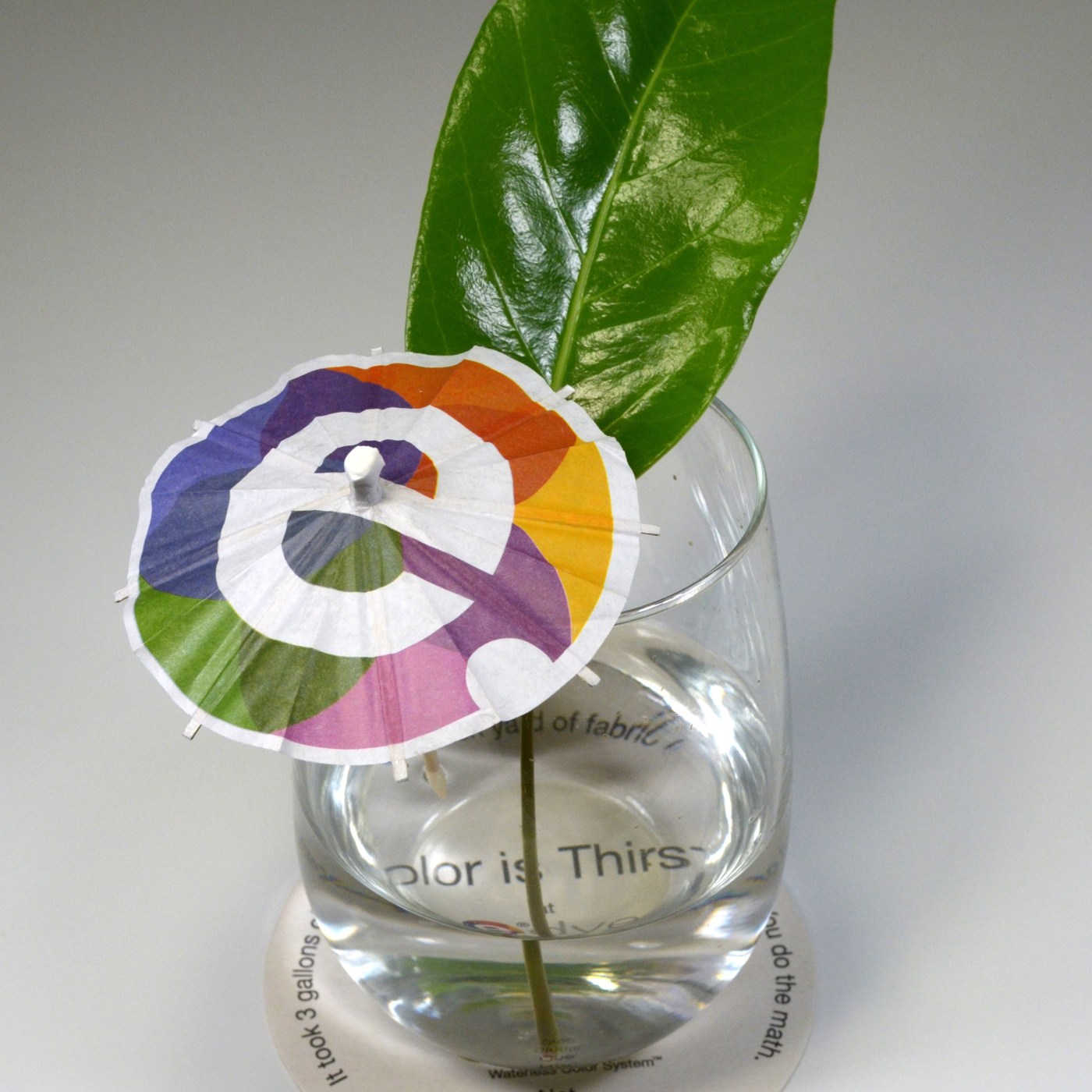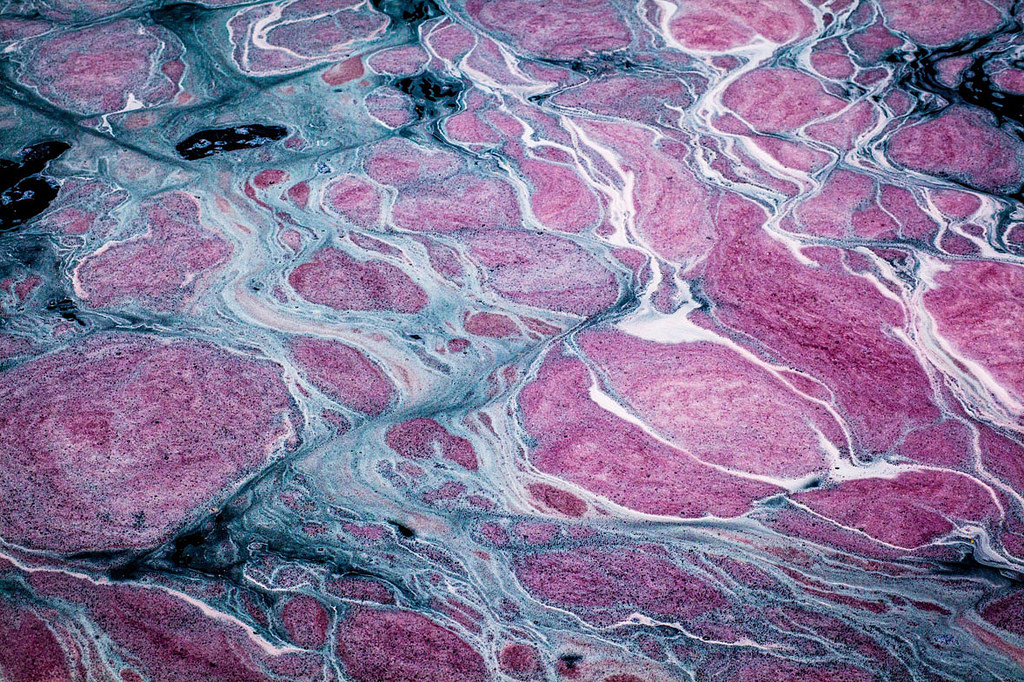Water plays a fundamental role in the production of textiles. Dyeing, rinsing, finishing; almost every manufacturing step requires water to complete the process. Wastewater from textile production is contaminated by a toxic mix of harmful chemicals.
For decades, traditional industrial dyeing processes have remained unchanged. Originally designed to dye cotton and wool, conventional dye processes use superheated water mixed with dyestuffs and chemicals to infuse synthetic fibers with color. By some measures, at least 22 liters of water are needed for each yard of dyed fabric.

Inside a dyeing factory, Binhai Industrial Zone. Fabrics need to be washed after every dyeing process, approximately 4 times a day.
According to the The National Resources Defense Council (NRDF) the textile apparel industry is one of the biggest contributors to water pollution. Textile manufacturing generates one-fifth of the world’s industrial water pollution.
“A single mill can use 200 tons of water for each ton of fabric it dyes. And rivers run red–or chartreuse, or teal, depending on what color is in fashion that season–with untreated toxic dyes washing off from mills.” (NRDC)
Global Efficiency Intelligence reports 20% of freshwater pollution comes from textile treatment and dyeing. On average, an estimated 100-150 liters of water is needed to process 1 kilogram of textile material. Approximately 28 billion kilograms of textiles are dyed per year in the apparel industry worldwide. Using 5 trillion liters of water (2 million Olympic sized swimming pools.

Research conducted around the global continues to document the harmful impact of textile production. Fortunately, the world’s major apparel brands and manufacturers are committed to finding solutions.
World Water Days turns 25 years old on March 22, 2018. This year’s theme focuses on Nature for Water, an initiative exploring how water pollution can be mitigated by replanting forests, and restoring wetlands. Hundreds of events will be held around the globe documenting the effects of water pollution. Clean water advocates will share success stories that inspire others to find creative ways to reduce water pollution.
Taking a leadership position in the textile industry the e.dye® Waterless Color System™ offers an alternative approach that significantly reduces water pollution and energy consumption. By mastering a process called solution dyeing e.dye® requires absolutely no water to dye synthetics.
Finally, there’s a way to dye synthetic textiles without polluting the earth’s water supply.

